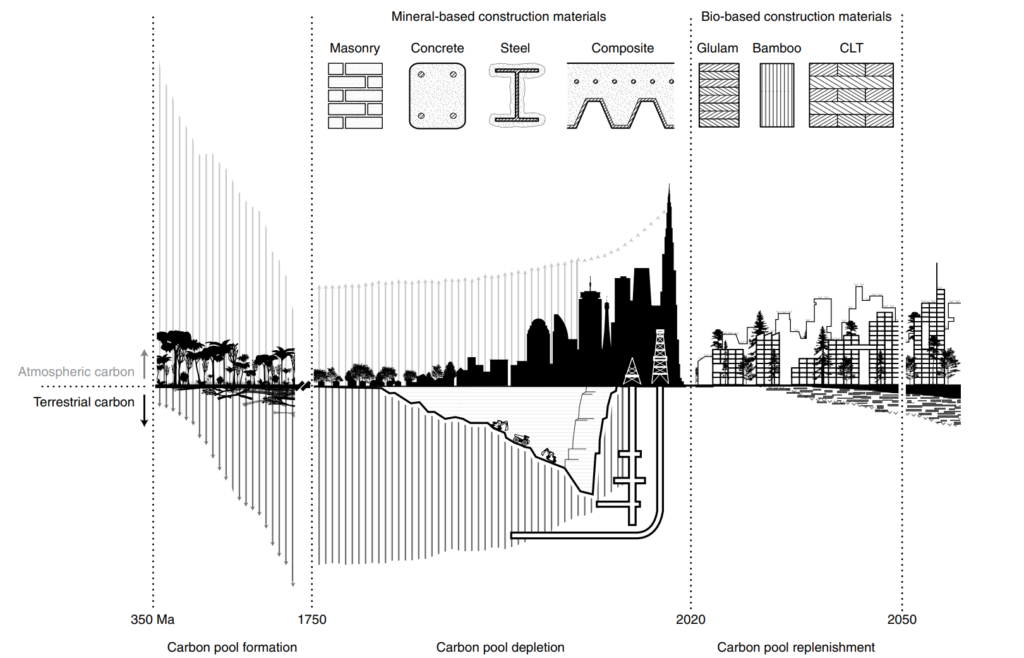Defining BioCities is set to be the second addition to the First series titled ” The Metapolis Dictionary of Advanced Architecture”. The book was published 25 years ago and since then the world has transitioned into the age of sustainability and regenerative design. For the same, the new edition looks into the compilation of words, concepts and practices that cumulatively define a Biocity. These words have been defined and coined by many experts in the field. The book will be formulated in collaboration with these individuals.
During this course, I had the unique opportunity to collaborate with the Defining Biocities team with research and to assist with collecting the same. For the book, I was tasked with researching the works of Hans Joachim Schellnhuber also known as John Schellnhuber. John is an atmospheric physicist and climatologist. He is also the founder of the renowned Potsdam Institute for Climate Impacted Research and is a member of the Intergovernmental Panel on Climate Change [IPCC]. John Schellnhuber has also been awarded a Nobel Prize for his incredible work and contribution to the research on Climate Change Impact. The following words are coined and formulated by John Schellnhuber both independently and in collaboration with other experts in the field.
01 | The Climatological Tipping Point [noun]
The Climatological Tipping Point is the critical point, when even a small change in functioning can have a significant impact on the direction of evolution of the earth’s systems, either positively or negatively.
The Climatological Tipping Point is a moment in time when the machinery systems of the earth will be nudged into a new system of operations, either positively or negatively. This point can be affected by small triggers that then create a larger more significant impact. These tipping points are large-scale shifts brought on by human-caused global warming. These then in return create the risk tipping points. All the tipping elements and triggers are interconnected a small change can trigger a massive impact on a global scale.
There are two types of climate system tipping points:
- The global or regional climate shifts from one stable state to another stable state that may be significantly less suitable for supporting human life.
- Natural systems, or changes occur non-linearly and faster than the rate of change predicted by climate forcing.
“As we indiscriminately extract our water resources, damage nature, and pollute the Earth and space, we are moving dangerously close to the brink of multiple risk tipping points that could destroy the very systems that our life depends on,” said Dr Zita Sebesvari, at UNU’s Institute for Environment and Human Security. “We are changing the entire risk landscape and losing our tools to manage risk.”
Extreme weather events are becoming more frequent and severe as a result of the climate issue. This has led to people and facilities being uninsured due to the frequency of these natural calamities. The word was first used in 2001 when this time was assumed to occur in a few centuries. If this continues and the tipping point trajectory is negative, the earth will soon be unsuitable for human habitation. At a regional level, this will cause droughts, and food shortages and affect the smaller ecologies and subsequently larger ecosystems like the Amazon forest and the Ice-caps.
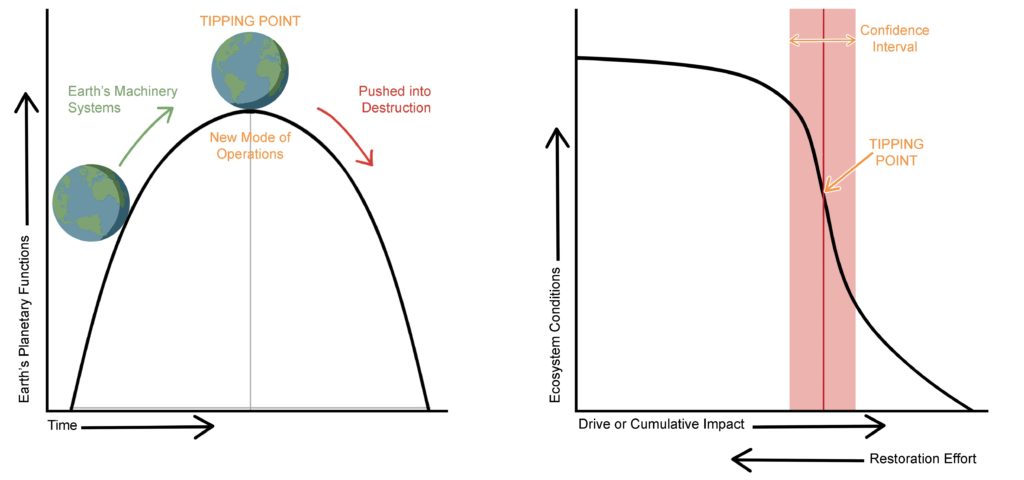
1.2 | The correlation between the Tipping Point and the Tipping Elements concerning time.
The first Graph shows the movement of the Earth’s planetary functions across time and how this affects the tipping point if necessary precautions are not taken. The second graph shows the correlation between the tipping point and the tipping elements. The tipping point (dark grey line) represents the place of steepest change on the non-linear curve, with the confidence interval (grey shading) on either side representing the zone of uncertainty around the exact location of the tipping point.
02 | The Climatological Tipping Elements [noun]
Tipping elements of the climate system are parts of the Earth system that are vulnerable to a tipping point or a critical threshold that, when crossed, causes the system to reorganize, frequently abruptly and/or irreversibly.
The Tipping Elements are factors that govern the trajectory of the tipping point. However significant or insignificant a tipping point may seem, they are all interconnected and impact the machinery systems of the earth in the bigger picture.
These elements can be divided into 3 larger categories:
- Cryosphere Entities (or Ice Bodies)
- Circulation Patterns (of the oceans and the atmosphere)
- Biosphere components
The image shows the correlation between the tipping points, temperatures and possible outcomes if they are to be crossed. These tipping points need to be studied using history as an example to understand the severity of the need for well-imagined and well-implemented laws at both a regional scale and a global scale. Climate system tipping points have the potential to cause a shift in the regional or global climate from a stable state to one that may be considerably less conducive to the survival of natural and human systems. Furthermore, there is a chance that tipping one element could cause other elements to tip as well, creating a tipping cascade. Over timescales that are too short for human cultures to be able to adjust, the effects of surpassing a tipping point can also cascade through socioeconomic and natural systems. Therefore, prediction models must be used in conjunction with paleo data and/or historical data to identify probable future tipping points.
The analysis of available data suggests that several tipping elements may reach their critical threshold this century due to human climate change. The two greatest threats are the Greenland ice sheet and the Arctic sea ice, but at least five other factors could surprise us by indicating a local tipping point.
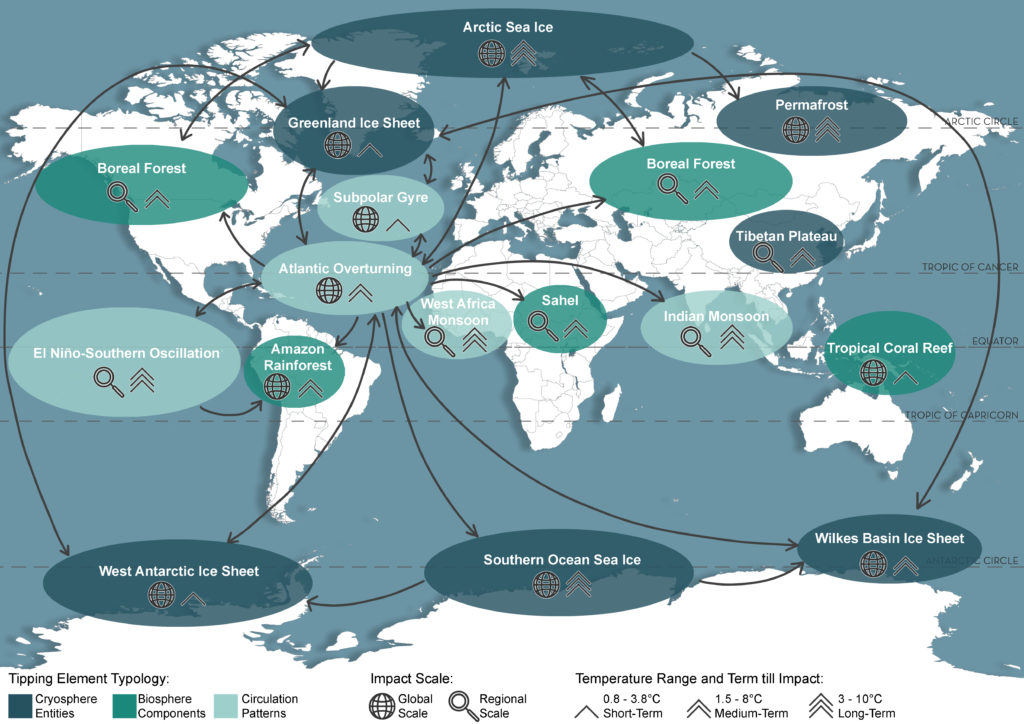
03 | Budget Approach to Emissions [noun]
This policy aims to keep global warming below the 2°C threshold until 2050 to avoid its impacts becoming severe and hard to reverse. In this method, each nation’s annual net CO2 emissions are assigned a predetermined value or budget.
In climate policy, the idea of a carbon budget is used to help set emissions reduction objectives fairly and practically. The maximum cumulative net global anthropogenic carbon dioxide (CO2) emissions that would prevent global warming above a specific threshold are examined.
According to the Paris Agreement, attempts should be made to keep the rise in global temperatures to 1.5°C over pre-industrial levels and to stay well below 2°C above pre-industrial levels. According to the IPCC AR6 WGI report, 400 GtCO2 is the budget, with a 66% likelihood, to keep warming to 1.5°C over pre-industrial (1850–1900) levels. One billion tonnes (metric tons) of CO2 equals one GtCO2.) Before the budget expires, net zero emissions must be reached to ensure that the carbon budget is not exceeded.
Estimates of the average emissions from 2011-2020 (GCP 2021) indicate that land-use change contributes about 10% of CO2 emissions. The remaining 90% of the budget is allocated to fossil fuel-related CO2 emissions, which includes cement. It is possible to divide the overall global carbon budget by nation. There are numerous ways to divide the global country budget across the individual country budgets. One approach would be to split the global budget into a budget for each individual and then allocate a budget to each nation according to its population. This table and graph use this kind of budget division.

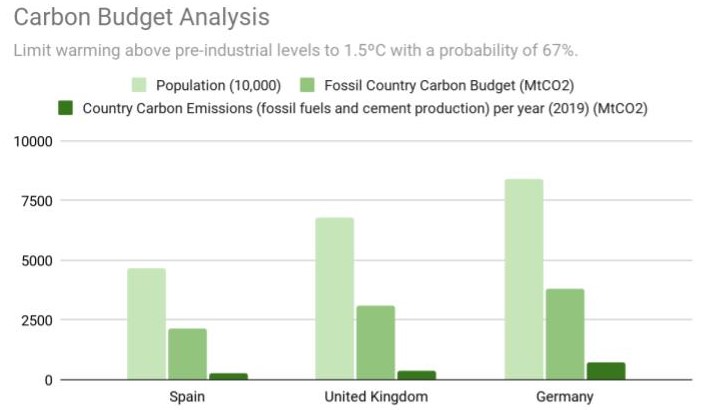
04 | Buildings as Global Carbon Sinks [adjective]
This concept refers to storing and maintaining carbon in these densely constructed carbon pools through sequestering atmospheric Carbon hence replenishing the terrestrial carbon storage, thereby reducing current atmospheric CO2 levels and offsetting future emissions.
This is done through the storage of carbon in long-term buildings through the choice of materials used. These materials have low carbon emissions during production and high carbon sequestering and storage potential. These conceptually act in the same manner as the coal deposits took place during the Carboniferous period where most of the terrestrial carbon was stored. This is proposed as forests face several risks that make them significantly inefficient when primarily tasked with storing carbon. In addition to providing healthy forest management through the use of mass timber in construction, the material also allows for a reduction in the need to mine terrestrial carbon that subsequently releases it into the atmosphere.
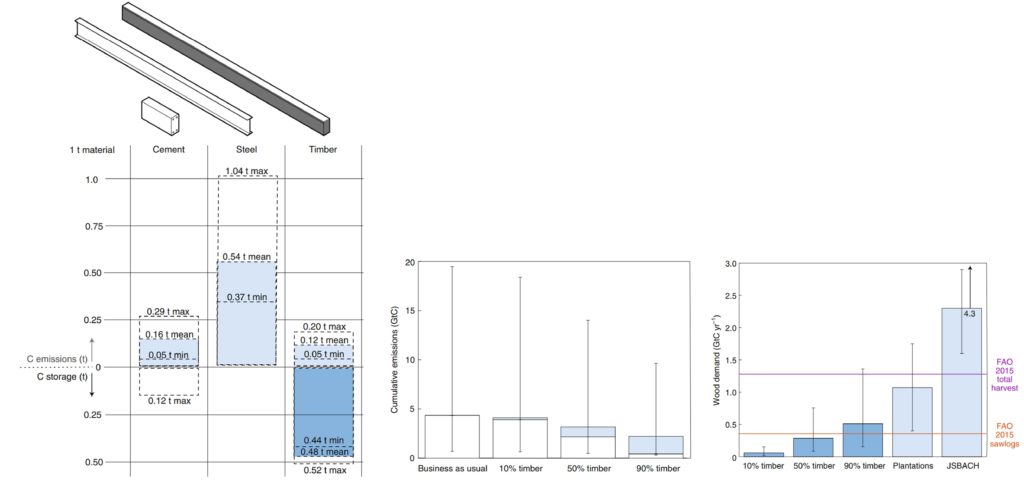
1.2 | Cumulative carbon emissions from manufacturing construction materials needed to construct buildings for new urban dwellers in 2020–2050.
1.3 | Comparison of projected wood demand needed for construction and wood supply available from the world forests.
